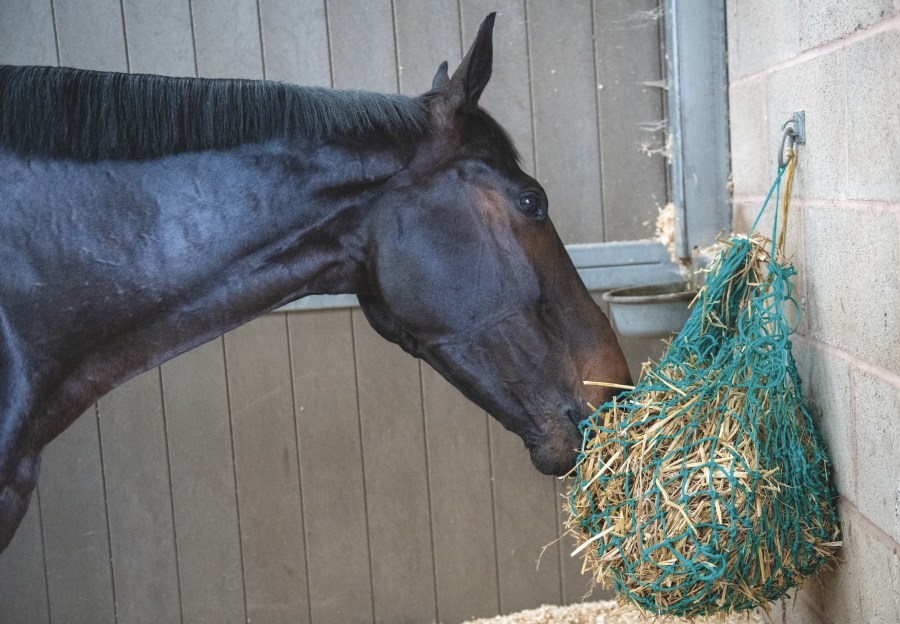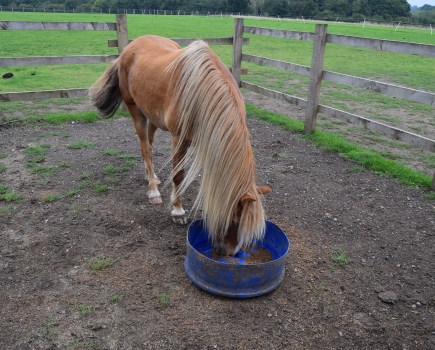Traditionally, straw was often eaten by our horses, but it’s less heard of these days not least because of the rumoured risk of it causing impaction colic and gastric ulcers. Independent nutritionist Donna Case BSc (Hons) explains why feeding straw is a good additional forage for many horses and can be a useful tool for helping them to be #FitNotFat.
In our grandparents’ day, the main option for bedding would have been a straw-based bed, and it was a given that some of the bed would be eaten. This in turn reduced the forage bill and was a regular ‘filler’ to go alongside the hay ration. The question here is did our ‘elders know best’, allowing their horses access to eating straw, and if so, what could our horses be missing out on today?
What is the nutritional value of straw?
First, it is important to understand that straw has a low nutritional value, being high in fibre and low in calories. It is much less digestible than hay or haylage as it contains a higher level of lignin (indigestible material).
As a result of this, where straw becomes particularly useful is for good-doer types, or those who are already overweight. While it must not make up all of the forage ration, it can replace up to 30%, effectively reducing the calories your horse consumes without taking away the amount fed.
In instances where you are struggling to find a lower calorie hay, you know you can reduce the calorie content by using this method. Straw will also extend eating times for those who are not already overweight but who you have to monitor carefully, enabling you to feed a certain amount ‘on top of’ the hay ration you are already giving.
The longer we can get our horses to eat and therefore chew, the healthier it is from a digestive and behavioural point of view. The fact we can do it in such a low-calorie format is overlooked by many.
How can I feed straw safely?
- Ensure your horse’s teeth are in good order. Horses with poor teeth will find straw more difficult to manage than hay or haylage. If the teeth are okay, then gradually introduce the straw to comprise up to 30% of the forage ration.
- As with any new forage or feedstuff, straw should be introduced gradually, to allow the digestive tract time to adjust and maintain positive digestive health.
- Type of straw is less important than the overall hygienic quality, although usually I tend to recommend either barley or oat straw. Find straw that has not been sprayed with chemicals, which it can be, particularly if being sold as a bedding, to discourage eating.
- Always ensure that there is access to clean drinking water at all times.
- There will not be any harm caused if you mix the straw in with your current hay and, because you soak your hay, then you end up also soaking the straw. Ultimately, however, while the nutritional value of straw will vary by type and growth conditions, average straw has a water soluble carbohydrate (WSC) level of between 6% and 7%, so there is no real need to soak it.
How much straw is it OK to feed?
An alternative to buying straw bales from your hay/haylage supplier would be to use readily available straw-based forage replacers, which are produced by many feed manufacturers.
When introducing it to your horse’s diet, first check if it is suitable as a complete or partial forage replacer; this may influence your choice. If it has a very high inclusion rate of straw, then it will be listed as a partial forage replacer.
Some, however, include straw at a much lower inclusion rate, so may be suitable as a complete replacer. Typically, the lowest calorie options will be the ones with the highest levels of straw, which would be fed alongside your hay/haylage to replace up to 30% of it.
Once you have established the ideal amount for your horse — which tends to be around 1kg to 3kg if acting as a partial forage replacer — gradually introduce 500g of it every other day, in a separate bucket in your horse’s stable.
Follow any manufacturer guidance, such as soaking. If you are unsure, call the feed company’s helpline. The major benefit of a feed manufacturer straw-based forage replacer is you will know its nutritional analysis.
Do horses like eating straw?
Don’t be surprised if your horse eats his hard feed and then starts on his hay, appearing as though he has ‘shunned’ his bucket of straw-based forage replacer.
As owners we love seeing our horses ‘eat up’, but the reality is horses typically turn to the straw when their sweeter forage sources have depleted.
Straw tends not to be as palatable, but really this is another of its major advantages, particularly for the good doer. Rather than eating rapidly the horse will go back and forth, reducing the length of time he goes without access to forage.
Do I need to add any supplements?
As with all forage sources in the UK, your horse’s diet will require the addition of vitamins and minerals, either from a suitable hard feed fed at the correct rate, or a balancer/vitamin and mineral supplement.
This will correct the low level of calcium (which can actually be low in hay too) and also the low protein content found in straw, while also providing a complete blend of required vitamins and minerals. Some manufacturer straw-based forage replacers are fortified with calcium to support this further.
![]() Have you heard about Your Horse’s #FitNotFat campaign? Equine obesity is an enormous welfare problem and we’re on a mission to provide owners and riders with the knowledge, skills and information you need to keep your horse in tip-top health. It could be life saving! Find out more
Have you heard about Your Horse’s #FitNotFat campaign? Equine obesity is an enormous welfare problem and we’re on a mission to provide owners and riders with the knowledge, skills and information you need to keep your horse in tip-top health. It could be life saving! Find out more
Meet the expert: Donna Case BSc (Hons) is an experienced, fully insured independent equine nutritionist who runs her consultancy ‘The Horse Feed Guru’ out of Newmarket, working both nationally and internationally. She works with a variety of horses and ponies from competition horses to retired veterans.









